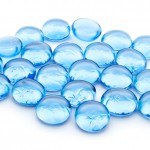
Increasing the availability of fluoride is a key component of effective prevention of caries. Evidence has shown that a number of fluoride delivery methods (toothpastes, mouthwashes, varnishes, gels) are effective. In addition to these a number of slow-release devices have been studies.
The aim of this review was to evaluate the effectiveness and safety of different types of slow- release fluoride devices on preventing, arresting, or reversing the progression of carious lesions on all surface types of primary (deciduous) and permanent teeth.
Methods
The Cochrane Oral Health Group Trials Register, the Cochrane Central Register of Controlled Trials (CENTRAL), Medline and Embase databases were searched together with the US National Institutes of Health Trials Register and the World Health Organization (WHO) International Clinical Trials Registry Platform. Parallel randomised controlled trials (RCTs) comparing slow-release fluoride devices with an alternative fluoride treatment, placebo, or no intervention in all age groups were considered. There were no date or language restrictions. Two reviewers carried out study selection, data abstraction and risk of bias assessment independently. Analysis followed standard Cochrane protocols.
Results
- No evidence was found comparing slow-release fluoride devices against other types of fluoride therapy.
- Only 1 RCT involving 174 children comparing a slow-release fluoride device (glass beads with fluoride were attached to buccal surfaces of right maxillary first permanent molar teeth) against control was identified.
- Of 132 children included at 2 years analysis was only performed on 63 (31test; 32 control) who had retained the beads (retention rate was 47.7% at two years)
- In these 63 children the caries increment was reported to be statistically significantly lower in the intervention group than in the control group (DMFT: mean difference -0.72, (95% CI -1.23 to -0.21; DMFS: mean difference -1.52, (95% CI -2.68 to -0.36) [very low quality evidence].
- Although this difference was clinically significant, it only holds true for those children who maintain the fluoride beads; over 50% of children did not retain the beads.
Conclusions
The authors concluded
There is insufficient evidence to determine the caries-inhibiting effect of slow-release fluoride glass beads. The body of evidence available is of very low quality and there is a potential overestimation of benefit to the average child. The applicability of the findings to the wider population is unclear; the study had included children from a deprived area that had low levels of fluoride in drinking water, and were considered at high risk of carries. In addition, the evidence was only obtained from children who still had the bead attached at two years (48% of all available children); children who had lost their slow-release fluoride devices earlier might not have benefited as much from the devices.
Commentary
This is the second update of this Cochrane review and despite identifying a large number of studies for consideration it is disappointing that no new studies could be included in this update. The only available study provides very weak evidence of effectiveness as the study analysis was based only on those children who retained the glass beads and the analysis should have been based on all participants. Therefore the only available study is at high risk of bias.
Links
Chong LY, Clarkson JE, Dobbyn-Ross L, Bhakta S. Slow-release fluoride devices for the control of dental decay. Cochrane Database of Systematic Reviews 2014, Issue 11. Art. No.: CD005101. DOI: 10.1002/14651858.CD005101.pub3.

New @CochraneOHG review of slow-release fluoride devices http://t.co/3vTIwaGjpC
Don’t miss – Slow-release fluoride devices: insufficient evidence they reduce dental decay http://t.co/3vTIwaGjpC